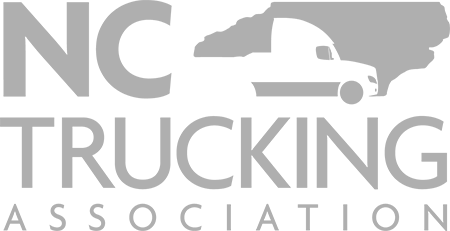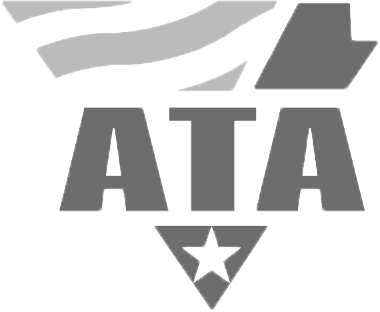The Expanding Horizon of US-Mexico Cross-Border Trade
Trade between the United States and Mexico forms a critical backbone of the North American economy. Bolstered by the USMCA agreement, this relationship has seen consistent growth, particularly in truck-borne trade. Factors like nearshoring and reshoring initiatives, where companies move manufacturing closer to end markets (like relocating operations from Asia to Mexico), are primary drivers of this expansion. This strategic shift aims to shorten supply lines, enhance resilience against global disruptions, and reduce transportation costs and transit times.
The manufacturing sector in Mexico, spanning industries from automotive and aerospace to electronics and consumer goods, is a major generator of cross-border freight. As production facilities south of the border ramp up, the flow of components, raw materials, and finished goods moving in both directions increases. Data consistently shows rising volumes of truck crossings, highlighting the escalating demand for efficient transportation options across the border.
While bulkier, full-truckload shipments remain prevalent for large-scale movements, the nature of modern supply chains often necessitates more granular logistics solutions. Just-in-time inventory strategies, increased customization of products, and the need for quicker replenishment cycles mean that businesses frequently require the movement of smaller quantities of goods. This is where the traditional dominance of truckload faces challenges in terms of cost-effectiveness and flexibility for these specific needs.
The infrastructure supporting cross-border trade, particularly at key gateways like Laredo, Texas, is constantly being evaluated and improved, but challenges persist. Congestion, customs procedures, and capacity imbalances remain significant hurdles. Overcoming these requires not just physical infrastructure improvements but also innovative logistics strategies and robust partnerships.
Why US LTL Providers are Increasing Focus Southbound
Historically, the cross-border movement of LTL freight into Mexico has often been handled through complex transloading processes or aggregated by truckload carriers. However, recognizing the substantial and growing demand for smaller shipments, US LTL providers are strategically enhancing their presence and capabilities along the border region. This expansion isn’t merely reactive; it’s a proactive move to capture a larger segment of a market that has traditionally relied more heavily on full truckloads or intermodal rail for long-haul movements.
Several factors make the Mexico cross-border market attractive to LTL carriers. Firstly, the sheer volume of trade means there is ample freight to consolidate. By aggregating multiple smaller shipments from different customers destined for various points in Mexico, LTL carriers can optimize trailer space and operational efficiency. This contrasts with dedicated truckload, which is optimized for full trailer capacity for a single customer’s freight.
Secondly, LTL services offer a cost advantage for shippers with less-than-full trailer loads. Paying only for the space their freight occupies, rather than the entire trailer, can result in significant savings, particularly for frequent, lower-volume shipping needs driven by evolving inventory management practices and nearshoring’s emphasis on leaner operations.
Furthermore, LTL networks are built around efficiency through hub-and-spoke models and carefully planned routing. Extending this network expertise to the cross-border environment allows carriers to offer potentially faster transit times and more predictable service for LTL shipments compared to ad-hoc arrangements. They can leverage their existing infrastructure on the US side and establish strong partnerships with Mexican carriers or set up their own cross-border operations to manage the complexities of international movements.
This increased focus also stems from the desire to provide a more comprehensive service offering to existing US customers who are expanding their manufacturing or distribution footprint into Mexico. Offering reliable Mexico cross-border LTL capacity solutions allows carriers to become more integrated partners in their clients’ overall supply chain strategies.
Meeting Demand for Smaller, More Frequent Shipments
Modern manufacturing and retail strategies have fundamentally altered shipping requirements. The traditional model of infrequent, large-volume shipments is increasingly being supplemented, or replaced entirely, by a need for smaller, more frequent deliveries. This trend is amplified in the context of nearshoring, where proximity encourages leaner inventories and quicker replenishment cycles.
Consider a manufacturer in Mexico receiving components from multiple US suppliers. Instead of waiting to accumulate a full truckload of parts from each supplier, they might need smaller batches delivered more often to maintain a steady production flow without holding excessive inventory. Similarly, finished goods moving north might be needed in smaller quantities by distribution centers or directly by retail outlets to react quickly to market demand or manage shelf space effectively.
LTL service is inherently designed to cater to this need. By consolidating shipments from various origins into a single trailer, LTL carriers make it economically viable to move freight that wouldn’t fill a full truckload. This agility allows businesses to:
- Reduce warehousing costs by decreasing the need for large buffer stock.
- Improve cash flow by shipping goods as they are ready, rather than waiting for a full truckload.
- Increase responsiveness to customer orders and market fluctuations.
- Minimize the risk associated with large single shipments.
The complexities of cross-border logistics — including customs clearance, border inspections, and differing regulations — add layers of challenge to these frequent, smaller movements. Efficient LTL providers specializing in this lane must possess the expertise and infrastructure to manage these processes seamlessly, ensuring that the benefits of frequent shipping are not offset by border delays or compliance issues. The ability to provide clear visibility into the status and location of these numerous smaller shipments becomes paramount for shippers.
Addressing Cross-Border Trucking Capacity Imbalances
The US-Mexico border logistics environment is notorious for capacity imbalances, which can significantly impact cost and efficiency. While northbound freight often flows consistently due to manufacturing and consumption patterns, securing southbound capacity can sometimes be challenging or more expensive, depending on the specific lane and current market conditions. This imbalance is partly a result of the directional flow of trade and the operational realities of carriers and drivers navigating the border region.
Truckload carriers often face situations where a truck delivers a full load southbound into Mexico but struggles to find a profitable return load (backhaul) heading north. This can lead to repositioning costs being factored into southbound rates, or simply a reluctance to commit assets to southbound lanes if backhaul opportunities are limited. Intermodal rail also plays a significant role but might not offer the flexibility or directness required for all types of freight or delivery points.
Increased participation by LTL providers can help mitigate some of these imbalances. LTL networks, by definition, consolidate freight from multiple shippers and destinations. This inherently diverse freight mix can create more balanced loads moving in both directions within the LTL system. For instance, an LTL trailer might carry southbound shipments from several US cities heading to different locations in Mexico and then pick up northbound LTL shipments from various Mexican origins destined for different US points.
By leveraging their consolidation capabilities and network density, LTL carriers can potentially optimize asset utilization across the border more effectively than a pure truckload model might in certain scenarios. This increased efficiency in using trailers and drivers on round trips can contribute to more stable capacity and potentially more predictable pricing for cross-border movements.
Furthermore, having more carriers actively involved in the cross-border LTL market increases overall capacity options available to shippers. This diversification helps reduce reliance on a limited number of providers and can foster greater competition, ultimately benefiting businesses needing reliable Mexico cross-border LTL capacity solutions.
Understanding Mexico Cross-Border LTL Capacity Solutions
Navigating cross-border LTL requires understanding the specific operational models employed by logistics providers. Unlike domestic LTL, international border crossings introduce complexities related to customs clearance, drayage (the short haul across the border), and partnerships with carriers authorized to operate on the other side. Reliable Mexico cross-border LTL capacity solutions typically involve one of the following primary models:
1. Direct Service Model: In this less common model for LTL, a single carrier with authority to operate in both the US and Mexico handles the shipment end-to-end. This offers simplicity but requires the carrier to have extensive infrastructure and legal standing in both countries, which is rare for LTL providers.
2. Transload Model (Most Common): This involves transferring freight from a US trailer to a Mexican trailer (or vice versa) at or near the border. The process typically works as follows:
- The US LTL carrier transports the freight from the origin to a border facility (e.g., in Laredo).
- At the facility, the freight is unloaded and transferred to a trailer operated by a certified Mexican carrier.
- Customs clearance procedures are managed by customs brokers on both sides.
- The Mexican carrier then transports the freight to its final destination in Mexico.
- For northbound shipments, the process is reversed.
This model is prevalent because it leverages the strengths of domestic carriers in their respective countries and addresses regulations regarding foreign carrier operations. It requires excellent coordination between the US carrier, the transload facility, the Mexican carrier, and customs brokers. Providers like Apex Transit, with established LTL consolidation sites in strategic locations like Laredo, are well-positioned to manage this complex choreography effectively.
3. Consolidation & Distribution Model: This extends the transload model by incorporating warehousing and consolidation services near the border or within Mexico. Shippers can send multiple smaller shipments to a facility where they are consolidated with other freight moving to the same region in Mexico. This allows for optimized trailer utilization on the Mexican side and can facilitate final-mile delivery or distribution within Mexico.
Effective Mexico cross-border LTL capacity solutions require more than just trucks and trailers. They demand sophisticated planning, strong partnerships with certified Mexican carriers, deep knowledge of customs regulations and documentation, and robust technology for visibility and communication. Providers leveraging an asset-based model combined with brokerage capabilities can offer greater flexibility and access to capacity, especially in volatile markets.
Key Factors When Selecting an LTL Partner for Mexico
Choosing the right logistics partner is crucial for successful and stress-free cross-border LTL shipping. Given the inherent complexities, not all LTL providers are equally equipped to handle freight moving between the US and Mexico. Shippers should evaluate potential partners based on several key factors to ensure they can provide reliable Mexico cross-border LTL capacity solutions:
1. Cross-Border Expertise and Experience: Does the provider have a proven track record specifically in the US-Mexico lane? Do they understand the unique challenges, customs processes, and regulatory environments of both countries? Experience with specific commodities you ship is also a plus.
2. Network and Infrastructure: Evaluate their presence at key border gateways (like Laredo). Do they have dedicated facilities or strong partnerships for transloading and consolidation? A robust network on both the US and Mexican sides is essential for seamless movement.
3. Carrier Partnerships: For the transload model, the strength and reliability of their relationships with certified, reputable Mexican carriers are paramount. These partners must adhere to high standards of safety, security, and service.
4. Technology and Visibility: Can they provide real-time tracking and visibility of your shipment across the border? API-ready tracking that integrates with your systems is a significant advantage for managing cross-border complexity. Robust communication tools are also vital.
5. Customs Brokerage Relationships: While not always providing brokerage services directly, a good LTL partner will have strong relationships with experienced customs brokers and can facilitate the clearance process, ensuring compliance and minimizing delays.
6. Security Protocols: Cross-border shipping carries increased security risks, including cargo theft. Inquire about their security measures, including trailer security, yard security, and driver vetting, especially when goods are in transit or at transload facilities. Providers who prioritize security can help de-risk your cross-border nearshoring trucking.
7. Flexibility and Scalability: Can the provider adapt to changes in your shipping volume and requirements? A partner offering both asset-based capacity and brokerage options can provide greater flexibility to find suitable Mexico cross-border LTL capacity solutions even during market fluctuations.
8. Communication and Support: Cross-border issues can arise. A partner with proactive communication and accessible support is invaluable for resolving problems quickly and keeping you informed.
Considering these factors allows shippers to select an LTL provider that acts as a true partner, capable of navigating the intricacies of US-Mexico logistics and providing consistent, reliable service.
The Future Outlook for Cross-Border LTL Services
The trajectory for US-Mexico cross-border LTL services appears set for continued growth. As nearshoring and related manufacturing investments in Mexico persist, the demand for flexible, cost-effective solutions for moving smaller, more frequent shipments will only increase. This trend is likely to solidify LTL’s position as a more significant player in a lane traditionally dominated by full truckload and intermodal.
Technological advancements will play a critical role in enhancing cross-border LTL efficiency. Improved visibility platforms that provide real-time tracking across multiple modes and carriers, streamlined digital documentation for customs, and data analytics to optimize routing and consolidation will be key differentiators for logistics providers. Shippers will increasingly seek partners offering sophisticated tech stacks that provide transparency and control.
Sustainability is another emerging factor influencing logistics decisions, including cross-border LTL. Shippers are evaluating their transportation partners’ environmental initiatives. LTL, by consolidating freight, is inherently more fuel-efficient per pound of cargo moved compared to multiple partial truckloads. Furthermore, carriers investing in newer, more fuel-efficient equipment or exploring alternative fuels will be better positioned to meet future shipper demands.
Regulatory environments in both the US and Mexico will continue to evolve, impacting border procedures and carrier requirements. Successful LTL providers will need to stay ahead of these changes, ensuring compliance and minimizing potential disruptions for their customers. Strong relationships with customs officials and brokers will remain vital.
Finally, the competitive landscape among LTL providers focusing on the US-Mexico lane is likely to intensify. This could lead to further innovation in service offerings, pricing models, and integrated logistics solutions. Shippers will have more options, but the need for diligent evaluation based on expertise, network, technology, and service reliability will remain paramount for securing optimal Mexico cross-border LTL capacity solutions.
As the US-Mexico trade relationship deepens and supply chains become more complex and fragmented, the role of specialized LTL services becomes increasingly important. Providers who invest in the necessary infrastructure, technology, and cross-border expertise are best positioned to meet the evolving needs of shippers and contribute to the continued growth of this vital trade corridor. Finding the right partner is essential for businesses looking to optimize their logistics in this dynamic environment.
For businesses navigating the intricacies of US-Mexico cross-border shipping, particularly those with varied shipment sizes, leveraging specialized LTL services can provide significant advantages. Providers with a strong presence at key border points, like Laredo, and the capability to manage transloading and consolidation effectively are invaluable partners. Their expertise in customs procedures and their relationships with certified Mexican carriers ensure a smoother, more reliable flow of goods.
Moreover, the increasing adoption of sophisticated technology for real-time visibility is transforming cross-border logistics. Knowing exactly where your shipment is at any given moment, especially during the border crossing process, provides peace of mind and enables proactive management of potential delays. Companies that invest in integrating their systems with carrier tracking via APIs can gain unprecedented insight into their supply chain’s performance across international lines.
The blend of an asset-based carrier model with brokerage capabilities offers shippers flexibility that is particularly beneficial in the often-unpredictable cross-border market. An asset-based provider brings direct control over a portion of the capacity and ensures adherence to specific standards of equipment maintenance and driver professionalism. The brokerage arm provides access to a wider network of partner carriers, allowing for scalability and the ability to source capacity even in challenging market conditions or for lanes where owned assets are not positioned.
Building strong relationships with logistics partners who prioritize communication and transparency is also key. Cross-border operations involve multiple handoffs and potential points of delay. Having a partner who communicates proactively and works diligently to address any issues that arise is critical for maintaining supply chain integrity and meeting delivery deadlines.
Sustainability considerations are also beginning to factor into transportation procurement decisions for cross-border freight. While LTL is inherently more sustainable for smaller shipments than sending multiple partial truckloads, carriers who are actively pursuing environmental goals, such as reducing emissions through newer equipment or exploring alternative fuels, align with the growing corporate focus on environmental responsibility.
In conclusion, the growing interdependence of the US and Mexican economies, coupled with the widespread adoption of nearshoring and lean inventory practices, is driving substantial demand for efficient Mexico cross-border LTL capacity solutions. Shippers must carefully vet potential logistics partners, focusing on their specific cross-border expertise, network capabilities, technological infrastructure, commitment to security, and overall service approach. Choosing the right partner will not only help optimize transportation costs but also enhance supply chain resilience and support business growth in this vital trade corridor.
Navigating the complexities of international borders, different regulations, and potential capacity constraints requires a logistics provider that understands the nuances of US-Mexico freight movement. The shift towards LTL for smaller, more frequent shipments is a testament to the evolving needs of businesses operating within this interconnected market. Providers who can offer integrated solutions, combining transportation with value-added services like consolidation and cross-docking near the border, provide a more complete and streamlined service offering.
Furthermore, the human element remains crucial in cross-border logistics. Experienced drivers, knowledgeable support staff, and customs experts on both sides of the border are essential for smooth operations. A logistics partner that invests in its people and fosters a culture of expertise and dedication can make a significant difference in the reliability and quality of service provided.
The future of US-Mexico cross-border logistics is bright, particularly for modes like LTL that can adapt to the changing patterns of trade. As manufacturing continues to grow in Mexico and supply chains become more agile, the demand for sophisticated and reliable Mexico cross-border LTL capacity solutions will only increase. By selecting partners with proven expertise, robust technology, and a commitment to service excellence, shippers can ensure their freight moves efficiently and securely across the border, supporting their overall business objectives in the dynamic North American market.
Have questions? Contact us here.














